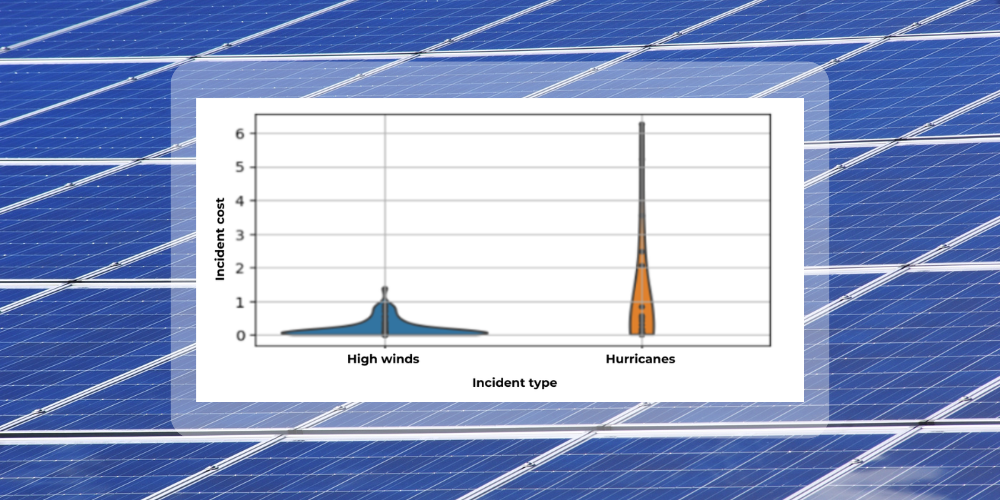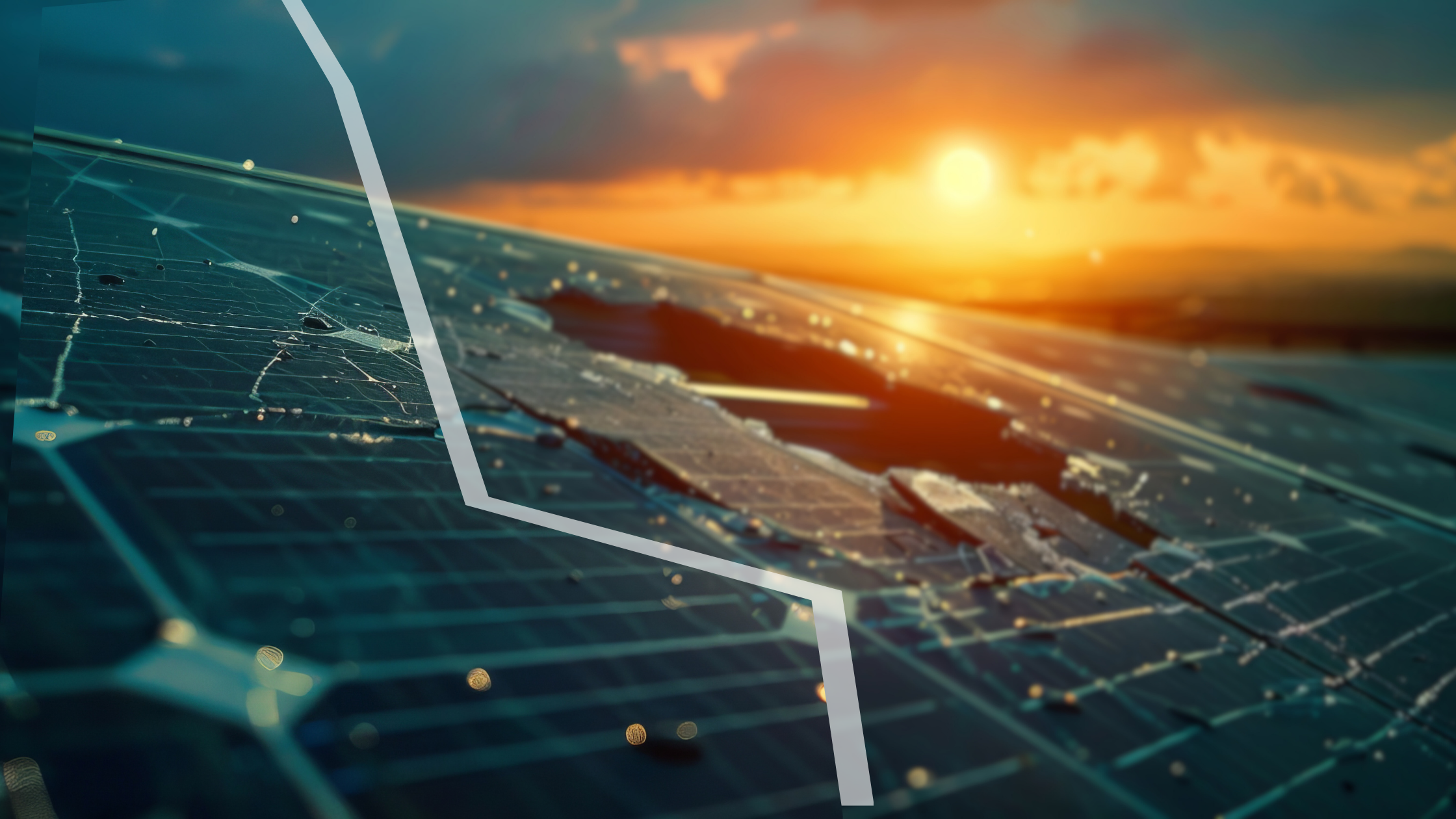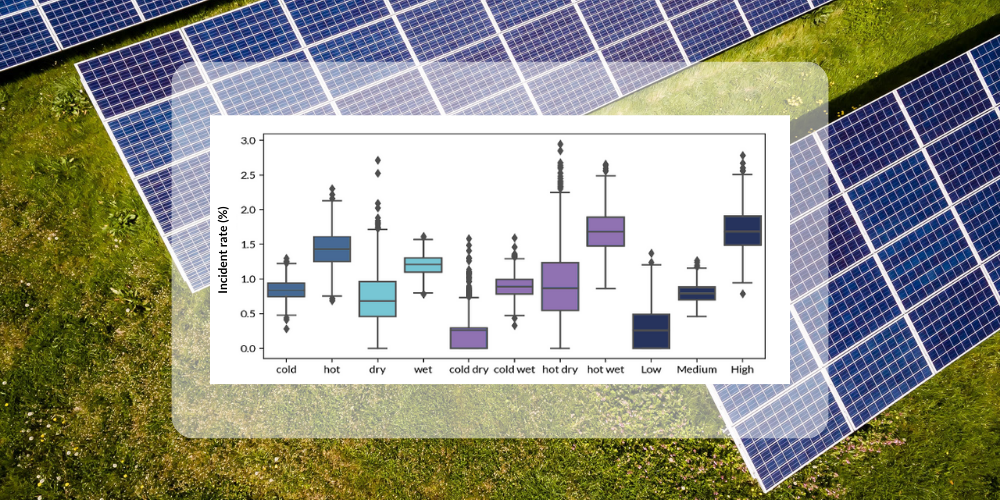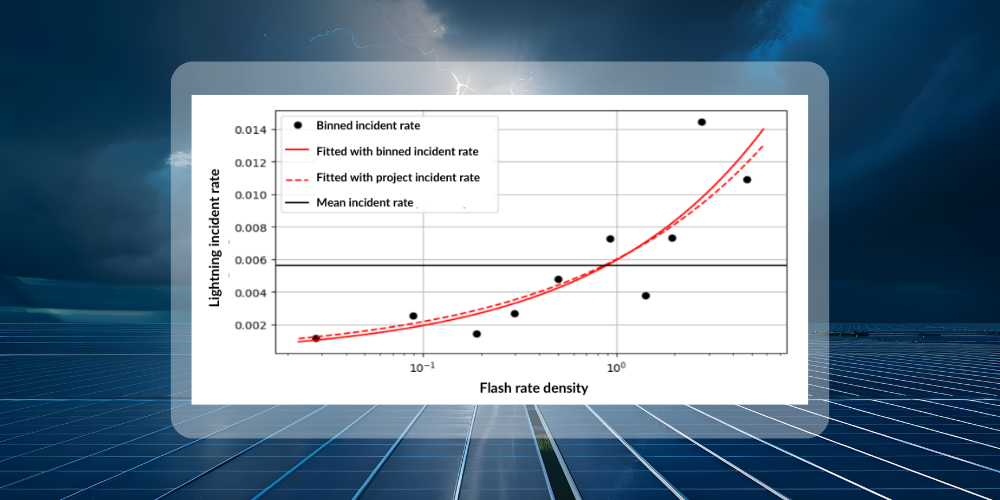Storms and hurricanes are often thought of as more of a wind farm risk, however these risks are also present and significant at solar farms.
If developers and owners are ill prepared, this can lead to costly damage. According to Clir’s risk database1, hurricanes account for 2.3% of total risks, while storms account for 10.9% of total risks. The average cost per incident can range from $207,417 to $1,205,093, depending on the event.
.png?width=497&height=248&name=StormsHurricaneChart%20(1).png)
Impact of location on storm damage
The terrain of the land around the PV farm impacts the frequency and severity of wind damage. Areas that are more susceptible to high winds, such as coastal regions or areas with high altitudes, are at a high risk for damage. Land use practices near the farm also impact the amount of damages. For example, clear cut logging of surrounding forests can decrease water retention and — since high winds and storms come with the risk of increased rainfall, causing flooding — can lead to higher risk of road washouts. This can result in greater downtime, as it can inhibit the ability to get to the site to perform repairs and maintenance.
The remoteness of a PV farm can impact damage in several ways. Remote locations may make it difficult to access the farm for maintenance and repairs, especially during or immediately after a storm. This can result in delayed response times and an increased likelihood of damages going unaddressed. Also, the farm may have limited access to local support services, such as electricians and equipment suppliers, which can also lead to delays in repairs and increase the likelihood of prolonged downtime and further damages.
High winds damages
Extreme winds can impact every part of the farm — from civil, electrical and mechanical breakdowns — yet most of the risks fall to inverter, PV panels and structure damage.
A common inverter damage caused by high winds is physical damage to the external cabinet. Wind speeds of 100 mph or more can cause doors, roofs, or other components to become dislodged or marred, potentially exposing the internal components to external conditions. Excessive flooding conditions can result in a water ingression into the inverters, leading to corrosion or short circuits that can damage the internal electrical components.
Another way high winds cause damage is through power interruptions or fluctuations in the grid. When the power grid experiences disruptions due to high winds, the voltage and frequency of the electricity can fluctuate, potentially causing damage to the inverter. This is because inverters are designed to operate within a specific range of input voltages and frequencies, and if these parameters are exceeded, the inverter can become damaged.
For the panels, extreme winds can cause physical damage through debris, electrical damage, and soiling. High winds can dislodge PV modules from mounting structures, or can bend and break support structures. Also, during storms, debris such as tree branches, flying objects, and building materials can become airborne and strike PV modules, causing physical damage. This can lead to cracks, chips or even complete failure of the modules. Electrical damage to PV modules can be caused by breaking or disconnecting electrical wiring, which can lead to power loss or damage to the electrical components of the farm. Finally, extreme winds can lead to an increase in dust and debris accumulation on the surface of PV modules, which can reduce their efficiency and overall performance.
How can high wind damages be mitigated?
High winds and tropical cyclones can cause significant damage to PV farms but a well-defined mitigation plan can help minimize the impact of these events. Mitigation plans should start at the design phase, with developers including measures to withstand high wind loads when building the panels. The construction of the racking system, foundation and wiring can affect the frequency of damage. It also requires choosing materials for your mounting structure and PV fastening that will withstand high winds.
Since the location of the PV farm can impact damage, farms in remote areas should prepare more robust mitigation strategies. Since it may be more difficult to access the farm after a storm, it may take longer for maintenance and repairs. There also may be higher costs for transporting materials to the site. Having spare parts readily available can help to mitigate some of these issues.
Understanding the damage that high winds can cause to your farm and the appropriate mitigation strategies requires industry data on best practices. Mitigation practices include regular O&M inspections, proactive replacement of components and implementing a comprehensive vegetation maintenance system.
Clir’s site-specific risk analysis and mitigation plan can ensure industry best practices are implemented.
Resources
1. Clir’s 250+ GW dataset of operational and risk data.





